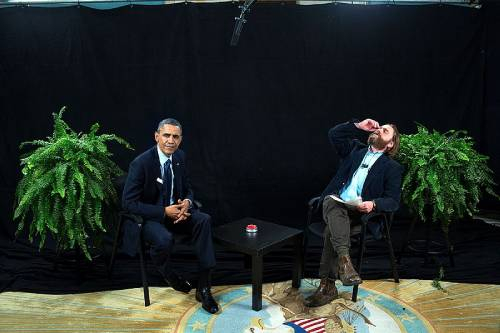How Hillary Clinton’s Marketing Strategies Nearly Got Her Elected
In 2016, the presidential race was an extremely tight one, it could have gone either way. Hillary Clinton won the popular vote but lost the one that mattered – the electoral vote. Nevertheless, she finished in second place and was this close to becoming the first female president of the United States of America.
Running for president shares many similarities to a business’ marketing efforts. To even be considered by voters, you have to identify your target audience and brainstorm the best methods to reach them.
As we look back on the 2016 presidential campaign, it didn’t only involve television advertising, direct mail, or CRM campaigns. Unlike past elections, this one was more content-driven with digital marketing strategies in place. Politicians themselves became the authors and distributors of news, opinion, and articles. The days where we only had big media to rely on were long gone.
When it comes to the former First Lady and her team, her digital marketing campaign was thoughtfully planned out and executed. As part of her marketing efforts, “The Feed” was the name of her digital news operation. Along with multiple digital marketing strategies, her team consistently published editorials covering broad topics covering political and entertainment figures to baking recipes and policy breakdowns. These were blasted all over social media.
Here are the key takeaways from her campaign:
Leverage your brand’s strength through storytelling and engagement
In terms of charisma and personality, Clinton may not be a natural. She doesn’t have the same ability to please a crowd like Obama or Bill Clinton, but she’s well-known for being a great listener. When it comes to one-on-one settings, she makes strong lasting impressions.
Knowing her strengths and weaknesses, the team focused on her listening skills and found ways to engage with voters. They made voters feel like they had direct access to her.
“A lot of the [campaign] videos you see are about these intimate moments,” said Jessica Morales Rocketto, Hillary for America’s Digital Organizing Director. “In organizing that, we’re trying to help people meet Hillary through contests. We’re trying to make sure she comments on Facebook pages, likes Instagram posts, and also [give people] access to ask her questions through conference calls or livestreams.”
Identify your target audience for each platform
If you’re using social media, there are a ton of platforms and they are all very different. There’s Twitter, Facebook, Instagram, Snapchat, email and so many more. Each platform works better with certain demographics and types of content. It’s important to do your homework first and consider which outlet best suits the message you’re trying to communicate. You could also alter messages according to the demographics of that particular outlet.

“[We ask], who’s the audience there? Do they tend to be older? Do they tend to be younger? Do they tend to be women? We [think] about who we’re talking to and what’s natural on the platform,” explained Andrew Forrest, HFA’s Director of Audience Development. “Twitter tends to be for influential folks, and reporters … On Facebook, we think a lot about video distribution. It depends who we’re trying to reach with our message.”
Don’t only use one data source, use a variety
The effectiveness of a marketing campaign also heavily relies on targeting your audience. Factors such as age, location, and interests are crucial for content strategy and ad placement. All of this data can come from various sources. As for Clinton, her team collected its own data as well as looked to Facebook and YouTube.
The more data you have, the better overview of your audience. Sources such as Facebook and YouTube tell you things like user behavior and characteristics such as language, family relations, shopping patterns, political beliefs, and so on. For example, when Clinton released an ad regarding her proposal for debt-free colleges, the campaign primarily targeted student voters. The second layer was targeted at parents with kids in college based on data from Facebook.
Measure your campaign through actions
Clinton’s digital news operation, The Feed, received high traffic. Every month, there would be 1 million new unique visitors and throughout the campaign, this figure reached 15 million. The traffic figures were similar to smaller digital media outlets.
Besides statistics, the success of your campaign can also be measured through actions. The Feed looked into how viral their content was, how often it was shared and distributed by the public. If a post was effective and the audience bothered to take action, it meant it hit the spot. When measuring the success of your campaign, watch out for these factors:
- Number of views
- Shareability
- Virality
- Relevancy
You don’t always have control over your message, but it might turn out okay!
Once something has been published on the Internet, it’s out in the public. You might be able to delete it, but chances are it’s been shared and you can’t get rid of it 100%. You have no control over what other people say about you or the connections they make, but sometimes it might benefit you.
In Clinton’s case, she received credit for something she didn’t do. During the October 4th debate, Governor Mike Pence discussed Donald Trump’s derogatory comments regarding the Mexicans. Pence referred to the whole situation as “that Mexican thing”. It was Pence, not Clinton.
However, a few days later, a Clinton supporter created the website thatmexicanthing.com, which redirected to the donation page of none other than Hillary Clinton. She had nothing to do with “that Mexican thing”, but without being able to control what other people’s actions, it somehow got connected to her.
Reach a wider audience through unexpected channels
Throughout your campaign, you’ll work with channels you know that are relevant to your demographics. At the same time, you should always embrace the unknown. During her campaign, Clinton decided to appear on web series Between Two Ferns starring Zach Galifianakis. The results? It was a hit and shared beyond her liberal fan base.

Between Two Ferns with Zach Galifianakis is a talk show hosted by comedian Zach Galifianakis. Every episode is a few minutes long and features a celebrity guest sitting between two potted ferns. Galifianakis plays the interviewer and he shoots awkward questions at the guests. The questions are often bizarre and inappropriate. The episodes also often promote a sponsor’s product.
After the episode with Hillary Clinton aired, the public viewed her as a politician with humor. This is an example of how to use creativity and think outside of the box. Do things the public never thought you would. It might just gain you more fans.
New trends and technologies are your friends
Every year sees new trends and technologies. As a marketer, you constantly need to be on the lookout for new social media platforms or content formats. To be an effective marketer, you’ll need to adapt to new methods and try not to fall behind.
During the 2016 campaign, Clinton’s marketing team focused on innovation. Instead of creating a general video, they optimized for social media. The videos were bite-sized and easy to share on platforms such as Facebook. These videos proved to be very prominent during the campaign.
The trend is your friend, but don’t forget about trust
Keeping up with the latest trends is crucial to your campaign. On top of being trendy, establishing trust is also of equal importance. There’s no point riding on a trend if your story doesn’t portray honesty or transparency.
Looking into Clinton’s digital news operation, the content strategy was designed with a storytelling perspective. They wanted readers to feel like they were reading a story about Clinton, which helped to get to know her better. The style they used was similar to that of Vox Media, Mic, and Buzzfeed. This style of writing generally targeted millennials.
Here are some pieces The Feed wrote:
“9 of Hillary Clinton’s Biggest Accomplishments”
“The Clinton Foundation, Explained”
Be a part of the daily life or your supporters
When developing marketing strategies, the ultimate goal is for people to engage with your product and brand regularly. This interaction may occur online or offline. It doesn’t matter where as long as there’s engagement in their lives.
As you’re planning your strategies, think about how you can engage with your supporters on a day to day basis. It could be through giving them something to watch on social media or receiving information from your organization. Any form of communication directed at supporters, or even indirectly seen by them, creates the opportunity for engagement.
In Clinton’s case, her campaign would post anything relevant on Facebook. A day after a debate, her team would post a video of it on the social networking platform knowing that it might appear on the feed of millions.
Make sure to support your interactive content
For marketing campaigns, engagement and interaction are key indicators that you’re doing the right thing. That your content resonates with the audience. In doing so, your brand can establish trust and push people towards the funnel. When it comes to politics, the goal is to engage voters over a period of time in hopes to persuade them to vote for you.
The Feed has been engaging with its audience daily. From publishing articles and videos to sending emails and making phone calls, Clinton’s team also did more in terms of interactive content. What worked well was the student loan calculator and card shuffle game Clinton shared with her audience.

With her student loan forgiveness policies, the college calculator gave them a better understanding of the money they would be able to save had she become the president. As for the card shuffle game, many people enjoyed it. These types of interactive content received more promotion and support from the press and influencers. If you compare them to an article, there’s way bigger room for engagement.
Use Brand Ambassadors to promote your brand
Word of mouth and influential marketing can truly advocate a brand. You should seek brand ambassadors wherever you can. They don’t have to be celebrities. Sometimes, working with individuals may also lead to having evangelists for your brand.
While campaigning throughout America, Clinton didn’t only work with popular celebrities and politicians. She also sought grassroots organizations as her brand ambassadors. She found people who were enthusiastic about her campaign and they wanted to talk about it. When you find these evangelists, make sure to include them in your marketing plan and provide them with the necessary resources so they can reach a wider audience.
Go niche and create specific content
Don’t be afraid to mix it up with your strategy. When it comes to the type of content, experiment with niche topics. Create specific content that is relevant to your product and brand.
Throughout the campaign, Hillary’s team tried all sorts of variables such as variety, timing, and tone, including writing specific content. What they noted from analytics was that specificity led to higher audience engagement. Specificity was relevant and high-performing.
Experiment and learn from different content and strategies
Experimenting is one of the ways to figure out what works for you. Keep trying different platforms and learn as you go. Once you start to see effectiveness in a certain area, optimize content for that platform.
Looking back at the 2016 campaign, Facebook was widely used by Donald Trump and Hillary Clinton. Twitter was also another platform that was often utilized. Along the way, Clinton’s team noticed the effectiveness of Twitter and also started using it even more. Twitter served a key role throughout the campaign. When the content was about real-time information, Twitter was the platform of choice.
A great deal of content marketing could be seen in the previous election. Whether it was writing for action, tailoring content, using various forms of social media, or creating interactive content, there was a razor-sharp focus on content.
As society and technology become more advanced, so will methodologies and trends. How we consume digital content today will continue to be studied by marketing professionals. To stay in the game, marketers need to constantly reinvent and get with the times.
Community

Congratulations on reaching the end!
Check out our podcast Impact Talks, where you can listen to high-profile experts from various backgrounds!
Join our Facebook Group Community with over 4,700 entrepreneurs, innovators, and creators by Startup Funding Event, where you get access to free live training, daily Q&As, design templates to get your business started, and support from the SFE team. Join here!




Leave a Reply
Want to join the discussion?Feel free to contribute!